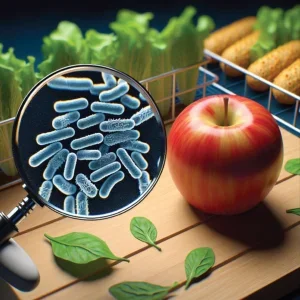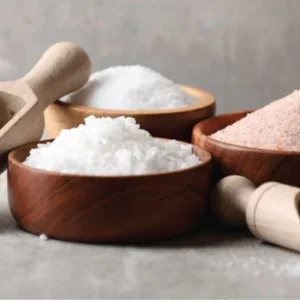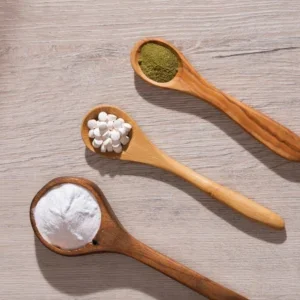
It’s been more than 85 years since Richard Kuhn and colleagues first introduced astaxanthin to the world.
$1.86bn
The estimated market value of astaxanthin in 2022.
Straits Research
In 1938 – the year Kuhn received the Nobel Prize in Chemistry for his research into carotenoids and vitamins – he discovered the carotenoid, revealing it as the source of red pigment in aquaculture. Today, we know it to be found in numerous organisms and microorganisms, including yeast, microalgae, salmon, krill and even lobster.
That’s not the only thing we’ve learnt since Kuhn’s groundbreaking discovery: back in the 1930s, it’s likely he didn’t fully appreciate the enormous potential of this natural antioxidant. As subsequent research has found, astaxanthin could offer vast benefits from heart health to cognition.
With that in mind, at any rate, it’s unsurprising that astaxanthin, belonging to a group of carotenoids known as xanthophylls, has gone through numerous approvals globally. That started with animal and fish feed, with human supplements, both in its natural and synthetic forms, appearing from the late 1980s.
That’s echoed by more recent changes. In September 2023, for instance, EU regulators amended the conditions of use of ‘astaxanthin-rich oleoresin from Haematococcus pluvialis algae’ following submissions from the Natural Algae Astaxanthin Association. Importantly, the modified regulation allowed for the use of astaxanthin as a supplement in two further age groups – covering infants, children and adolescents.
Unsurprisingly, the revamped rules were widely welcomed by the industry, with supporters stressing that more people would now be able to receive the benefits from this powerful natural antioxidant.
But beyond these headline developments, what exactly is astaxanthin – and what precisely can it do for the human body?
What’s in a name?
Astaxanthin is a carotenoid. Similar in chemical structure to beta-carotene, Professor Richard Allsopp, an expert in the biology of ageing at the University of Hawaii’s Institute for Biogenesis Research, explains it has a more potent antioxidant effect. These antioxidant properties can lead to practical health benefits, thanks to their ability to protect human cells from free radicals or oxidative stress. Among other things, it can enhance the immune system, and bolster eye health, as well as protect the skin.
More specifically, with the ability to elicit a positive inflammatory response, the properties of this unique small molecule can cross the blood-brain barrier. As studies suggests, this helps protect against – and slow the progression of – cognitive diseases like Alzheimer’s and Parkinson’s. Lowering inflammation, astaxanthin can also ease inflammatory conditions like celiac disease, rheumatoid arthritis and carpal tunnel syndrome.
Over the past five years, scientists have raised the prospect that astaxanthin could help treat Type 2 diabetes – due to its ability to improve insulin sensitivity. There is also clinical evidence suggesting it may help lower oxidative stress and reduce the risk of fat and LDL cholesterol building up in the arteries, improving heart health and helping combat cardiovascular disease. The antioxidants may also help reduce the risk of cancer. But recent studies have gone further, suggesting astaxanthin could be linked to the slower growth of breast and skin cancer cells.
It has long been known that carotenoids play a role in maintaining healthy eyes. But beta carotene, lutein and zeaxanthin – contained in many supplements aimed at prompting vision – are said to be bolstered when combined with astaxanthin. According to some studies, that’s thanks to the protection it offers against UV damage from the sun. Another potential beneficiary is skin, with the accumulation of astaxanthin in the epidermis and dermis layers, potentially blocking UV penetration while also helping to repair previous damage.
Despite these exciting benefits, however, research is ongoing as to exactly what astaxanthin can do. Allsopp, for his part, is one of those hoping to investigate further. “The effect of astaxanthin on agerelated diseases is of particular interest to me,” he says. “Also of interest is the possible beneficial effect of high doses of astaxanthin and/or pharmaceuticalgrade astaxanthin as a therapeutic in sports medicine.”
Those musings, though, are indicative of where we are right now – astaxanthin is clearly beneficial, but exactly how we leverage it remains unclear, especially beyond existing foods and supplements.
What’s on the menu?
Another issue involves the delivery of astaxanthin into the body. As Allsopp emphasises, there are currently somewhat limited options for working the compound into our daily diets. “Actually astaxanthin levels available naturally from the diet are quite low and may have very low effects in the body,” he says. “This is why astaxanthin supplements are particularly valuable.”
According to Allsopp, right now the two most common sources of astaxanthin in the Western diet are salmon and some edible seaweeds. That’s shadowed by other seafoods: crabs, lobster and shrimp, among others. Though not particularly common, phaffia yeast is also known to be one of the few alternative sources available.
“The effect of astaxanthin on age-related diseases is of particular interest to me. Also of interest is the possible beneficial effect of high doses of astaxanthin and/or pharmaceutical-grade astaxanthin as a therapeutic in sports medicine.”
Professor Richard Allsopp
It therefore seems likely that the only way to consume astaxanthin in any significant amount, relatively speaking, is through supplements – or finding ways to add it to foods or cooking processes. Allsopp says the current thinking is that we should consume around 10-20mg per day. “However,” he adds, “astaxanthin is quite safe to consume at significantly higher doses and may have more beneficial effects too.”
6,000
Natural astaxanthin is thought to promote this many times more antioxidant activity than Vitamin C.
NCBI
Despite this flexibility, there is currently no clear guidance on what the optimal daily dose of astaxanthin is, with varying but limited advice. Depending on the desired effect, it is generally suggested that the daily intake is between 4-12mg; many scientific studies have included a maximum daily dose of 12mg to date. In 2022, however, a study suggested the daily range should be 2-6mg. Notwithstanding Allsopp’s relative flexibility, meanwhile, there are some side-effects of consuming too much astaxanthin – including frequent bowel movements and, in more excessive cases, increased stomach pain.
Dr Bradley Willcox, Allsopp’s colleague and a professor and director of research at the Department of Geriatric Medicine at the University of Hawaii contributes to the safe dose debate by suggesting that the optimal varies from person to person. “Supplements also vary in dose,” he says, “typically between 4-12mg per capsule, but it may range as low as 1mg and as high as 24mg.” Willcox adds that astaxanthin’s health benefits are thought to act, in large part, through the activation of the FoxO3 gene – increasingly recognised as a crucial player in long-term human health and longevity. “If you have the FoxO3 longevity genotype,” he explains, “you may get the same health benefits at a lower dose as someone without the longevity genotype.”
What’s next?
Put differently, agreement on the ideal consumption figure seems a long way off. That, as one recent study suggests most people are only consuming around 11mg per year suggesting there is much more scope to incorporate it into our daily routines.
38mg/kg
The amount of astaxanthin that is found in wild sockeye salmon.
ResearchGate
In a broader sense – especially given the only other route is a diet high in some forms of seafood, which in itself can present risks – the best way to up the intake of astaxanthin is likely through supplements. But as so often in this exciting new research area, more studies are clearly necessary.
All the while, food manufacturers are becoming increasingly aware of the potential health benefits, at a time when demand for healthy alternatives to traditional foods and ingredients grows. In particular, food companies are investigating the potential of emulsifying astaxanthin into their foods – but that obviously comes with its own set of challenges.
As demand for astaxanthin supplements grows – said to account for 39% of global market share in 2022, according to Globe Newswire – it’s clear that the food manufacturers that find ways to incorporate it into their products stand to gain. It is, however, an ambition that is likely hard to reach. Ways of incorporating it, how much should be used, and where it is best suited all remain up for debate. But as should be clear by now, the food sector is nothing if not innovative.






